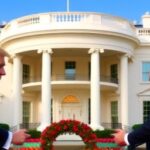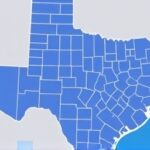In a stunning twist that could rewrite the annals of U.S. monetary history, the Federal Reserve is hurtling toward its December meeting with whispers of a deadlocked 6-6 vote on interest rates, a scenario never before seen in the central bank’s 110-year existence. This unprecedented division within the Federal Open Market Committee (FOMC) underscores the high-stakes tug-of-war between taming persistent inflation and averting economic slowdown, leaving markets on edge as the clock ticks down.
- FOMC Fractures Deepen Amid Stubborn Inflation Pressures
- Uncharted Territory: Implications of a Potential 6-6 Deadlock
- Voices from the Vanguard: Economists and Officials Weigh the Rate Cut Conundrum
- Lessons from the Past: How Fed Ties Have Shaped Monetary Policy Evolution
- Markets on High Alert: What December’s Verdict Means for the Road Ahead
FOMC Fractures Deepen Amid Stubborn Inflation Pressures
The Federal Reserve‘s internal rift has been brewing for months, but recent economic data has pushed the divide to a boiling point. Inflation, measured by the Consumer Price Index (CPI), clocked in at 3.2% year-over-year in October, well above the Fed’s 2% target—a stubborn holdover from post-pandemic supply chain snarls and geopolitical tensions. Core inflation, excluding volatile food and energy prices, sits at 4.1%, signaling that underlying price pressures aren’t easing as quickly as policymakers hoped.
FOMC members, a mix of seven governors and five regional bank presidents, have voiced sharply contrasting views in recent minutes and speeches. Chair Jerome Powell, in a mid-November address to the Economic Club of New York, emphasized the need for caution: “We must remain vigilant against inflation’s return while supporting employment. Rushing into a rate cut now risks undoing our progress.” Yet, dovish voices like San Francisco Fed President Mary Daly argue that the labor market’s softening—unemployment at 4.1% and job growth slowing to 150,000 monthly—warrants immediate relief. “Delaying a rate cut could tip the economy into recession,” Daly warned in a recent interview with Bloomberg.
This schism isn’t just philosophical; it’s structural. The FOMC’s composition has shifted with new appointments under the Biden administration, bringing in more progressive economists who prioritize inclusive growth over hawkish inflation-fighting. Meanwhile, regional presidents from inflation-battered districts like Dallas and Cleveland push for sustained higher interest rates. Sources close to the Fed suggest that at least six members favor a 25-basis-point rate cut from the current 5.25%-5.50% federal funds rate, while an equal number advocate holding steady, potentially forcing Chair Powell to cast a tie-breaking vote—a power he holds but has rarely exercised.
Uncharted Territory: Implications of a Potential 6-6 Deadlock
A 6-6 tie in the FOMC would mark uncharted territory for the Federal Reserve, thrusting monetary policy into a limbo that could rattle global markets. Historically, the committee has avoided ties through consensus-building, but internal deliberations this cycle reveal a committee more polarized than at any point since the 2008 financial crisis. In that era, the Fed slashed rates to near-zero amid panic; today, the debate centers on whether to ease or endure.
If the vote splits evenly, the status quo would likely prevail—interest rates unchanged—per FOMC protocols. But the signal sent would be seismic: indecision at the world’s most powerful central bank. Economists warn this could amplify uncertainty, already high with consumer confidence dipping to 102.5 in November per the Conference Board. Bond yields, which influence mortgage and auto loans, might spike as investors price in prolonged higher-for-longer policy. The 10-year Treasury yield, hovering at 4.3%, could climb toward 4.5%, per JPMorgan forecasts, squeezing housing affordability further.
Wall Street’s reaction has been jittery. The S&P 500, up 20% year-to-date on rate cut bets, dipped 1.2% in pre-meeting trading sessions last week. Tech giants like Apple and Nvidia, sensitive to borrowing costs, saw shares wobble as analysts from Goldman Sachs revised earnings projections downward by 5% assuming no December relief. “A tie isn’t just a procedural hiccup; it’s a vote of no confidence in the Fed’s ability to navigate dual mandates,” said Krishna Guha, vice chairman at Evercore ISI, in a note to clients.
Beyond markets, the human cost looms large. Small businesses, facing 7% average borrowing rates on lines of credit, report delayed expansions. The National Federation of Independent Business’ optimism index fell to 91.7 in October, citing interest rates as the top concern. For households, a delayed rate cut means sustained pressure on everything from credit card debt—now averaging 21% APR—to student loans. With total U.S. household debt at $17.5 trillion, even a quarter-point delay could add billions in annual interest payments.
Voices from the Vanguard: Economists and Officials Weigh the Rate Cut Conundrum
The rate cut debate has drawn sharp commentary from across the economic spectrum, highlighting the Federal Reserve’s pivotal role in shaping monetary policy. Harvard economist Larry Summers, a former Treasury Secretary, blasted the dovish camp in a Washington Post op-ed: “Inflation above target isn’t a suggestion—it’s a siren. A premature rate cut would be monetary malpractice, inviting 1970s-style stagflation.” Summers points to shelter costs, up 5.1% annually, and services inflation at 5.4% as red flags that demand patience.
Conversely, former Fed Vice Chair Janet Yellen, now Treasury Secretary, has subtly urged balance in public remarks. During a November panel at the IMF’s annual meetings, she noted, “The economy’s resilience allows for measured steps, but we can’t ignore softening indicators like declining job openings—down 15% from peaks.” Yellen’s comments reflect the administration’s push for a soft landing, where inflation cools without mass layoffs.
Inside the Fed, the debate rages via proxies. Atlanta Fed President Raphael Bostic, a known inflation hawk, dissented at the September meeting—the first such vote since 2019—arguing for no rate cut until core PCE inflation (the Fed’s preferred gauge) dips below 3%. Bostic’s district, encompassing the Southeast’s manufacturing hub, reports supply chain inflation lingering at 4%. On the flip side, Chicago Fed President Austan Goolsbee, an Obama-era advisor, has penned essays advocating a December move: “Waiting risks overtightening; our models show a 40% recession probability if rates stay elevated into 2024.”
Independent analysts echo this divide. A Reuters poll of 80 economists showed 55% expecting a December rate cut, but with widening dispersion—10% now predict a hold due to the tie risk. Moody’s Analytics chief economist Mark Zandi forecasts that a deadlock could shave 0.2% off GDP growth in 2024, as business investment freezes amid policy fog. “The FOMC’s unity is its superpower; a tie exposes the cracks,” Zandi told CNBC.
Global perspectives add urgency. The European Central Bank, facing similar woes, cut rates by 25 points last week, citing synchronized cooling. ECB President Christine Lagarde remarked, “The U.S. Fed’s caution is admirable, but paralysis helps no one.” With the dollar index at 103.5, a Fed hold could strengthen the greenback, hurting U.S. exporters and complicating trade balances already strained by a $1 trillion goods deficit.
Lessons from the Past: How Fed Ties Have Shaped Monetary Policy Evolution
While a 6-6 tie would be historic, the Federal Reserve’s past brushes with internal discord offer cautionary tales for today’s interest rates standoff. The FOMC, established under the 1913 Federal Reserve Act, has operated on consensus since its inception, but near-misses abound. In 1994, under Alan Greenspan, the committee grappled with early inflation signals, leading to a surprise 25-basis-point hike that caught markets off-guard and sparked a brief bond rout.
More poignantly, the 2006-2007 prelude to the Great Recession saw divided votes on rate normalization. Minutes reveal hawks like then-Dallas Fed President Richard Fisher pushing for hikes amid housing bubbles, while doves fretted over growth. The compromise: gradual increases to 5.25%, which proved insufficient against the subprime meltdown. “Those debates taught us that indecision amplifies risks,” reflects Ben Bernanke in his memoir, noting how post-crisis reforms like enhanced transparency aimed to preempt ties.
Under Powell’s tenure since 2018, the FOMC has navigated three rate-hiking cycles, lifting the federal funds rate from zero to over 5% in response to 9.1% peak inflation in 2022. Dot plots—quarterly projections—showed convergence until recently, with September’s median forecasting three 2024 cuts. But updated November projections, if leaked divisions hold, might reveal a bimodal distribution: half eyeing cuts, half pauses. This echoes the 1970s Volcker era, when Paul Volcker’s aggressive hikes to 20% crushed inflation but induced recession— a ghost haunting today’s debate.
Statistically, FOMC dissents are rare: only 3% of votes since 1936, per Fed data. Yet, rising polarization mirrors broader U.S. divides, with regional disparities amplified by events like Hurricane Helene’s $50 billion economic hit in the Southeast. “Monetary policy isn’t made in a vacuum; it’s a reflection of America’s fault lines,” observes Brookings Institution fellow Nellie Liang, a former Fed vice chair.
Reforms post-2008, including the Vice Chair for Supervision role, were meant to streamline decisions. But with inflation’s uneven retreat—down from peaks but sticky in sectors like autos (up 6%) and apparel (4.5%)—the committee’s dual mandate of price stability and maximum employment strains under unity’s weight.
Markets on High Alert: What December’s Verdict Means for the Road Ahead
As the December 17-18 FOMC meeting approaches, all eyes are on the Federal Reserve’s next move, with a potential tie casting long shadows over monetary policy’s future. Traders are pricing in a 75% chance of a rate cut via CME FedWatch Tool, but volatility metrics like the VIX have surged 20% in recent weeks, signaling braced nerves. If Powell breaks a tie in favor of easing, it could unleash a Santa Claus rally, boosting equities by 3-5% as cheaper borrowing fuels investment.
Yet, a hold or perceived dovish pivot might stabilize the dollar, aiding importers but pressuring emerging markets already reeling from U.S. rate hikes—think Argentina’s 200% inflation or Turkey’s lira woes. Domestically, the implications ripple through 2024’s election cycle: lower rates could juice consumer spending, supporting Biden’s economic narrative, while persistent highs might fuel voter frustration over grocery bills up 25% since 2020.
Looking further, the Fed’s post-meeting press conference and updated dot plots will be scrutinized for hints of 2025’s path—potentially four cuts if growth falters, or none if inflation rebounds. Powell has signaled data-dependence, with November’s jobs report (expected at 180,000 adds) and December CPI pivotal. “Whatever the vote, the real test is implementation,” says former Fed Governor Kevin Warsh. “A divided FOMC must project resolve to anchor expectations.”
For investors, diversification reigns: bonds for yield protection, stocks in rate-sensitive sectors like real estate (REITs down 10% YTD). Households should eye fixed-rate locks before any hike signals. Globally, coordinated action with peers like the Bank of England—facing 2.3% inflation—could mitigate spillovers. Ultimately, this historic juncture reminds us: the Federal Reserve’s decisions don’t just move markets; they shape livelihoods, from factory floors in Ohio to boardrooms in Silicon Valley. As uncertainty peaks, one thing is clear—the world’s largest economy hangs in the balance of 12 votes.









